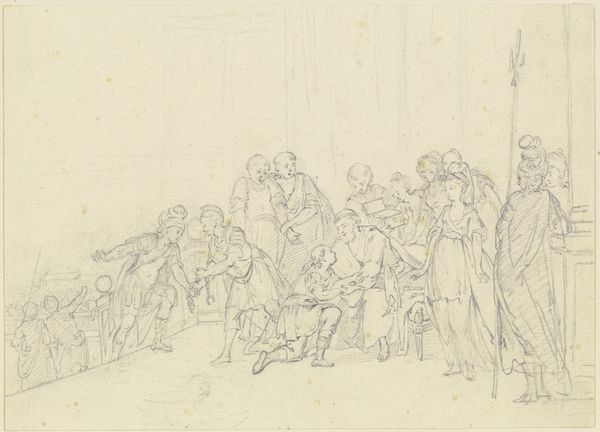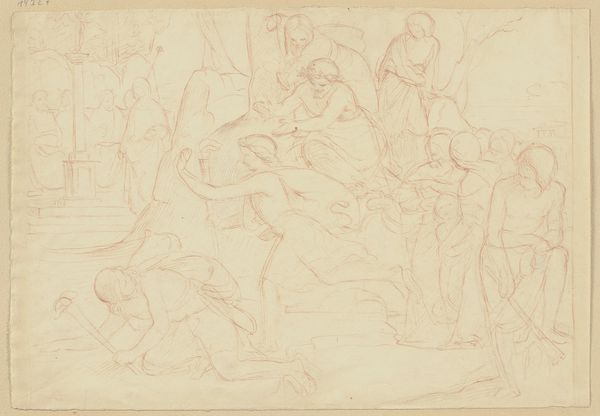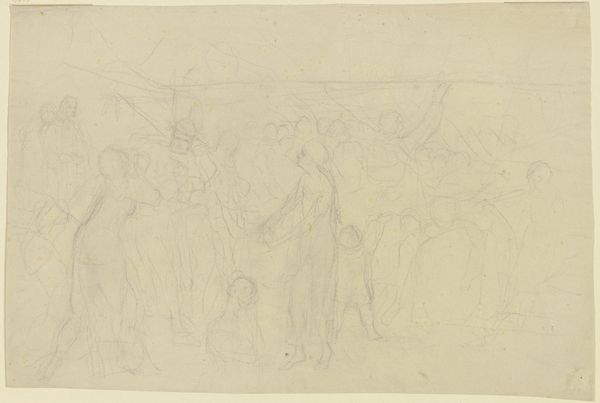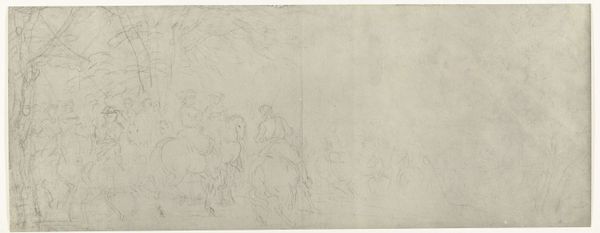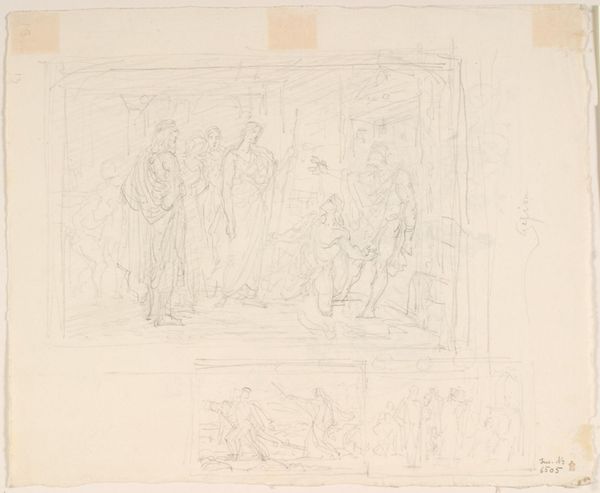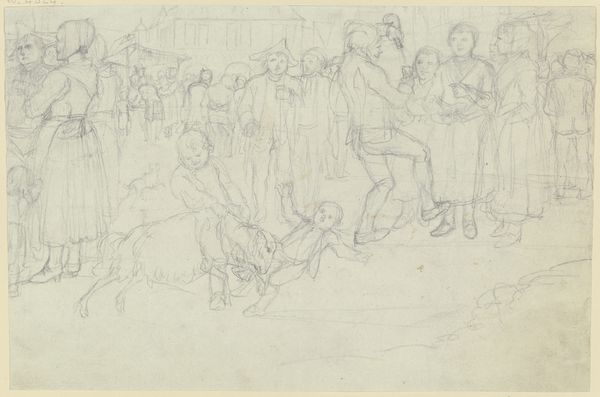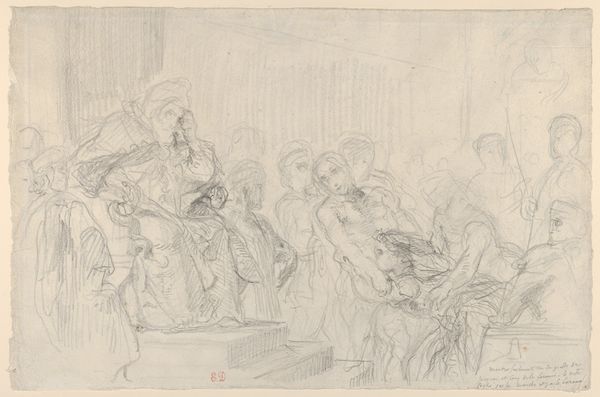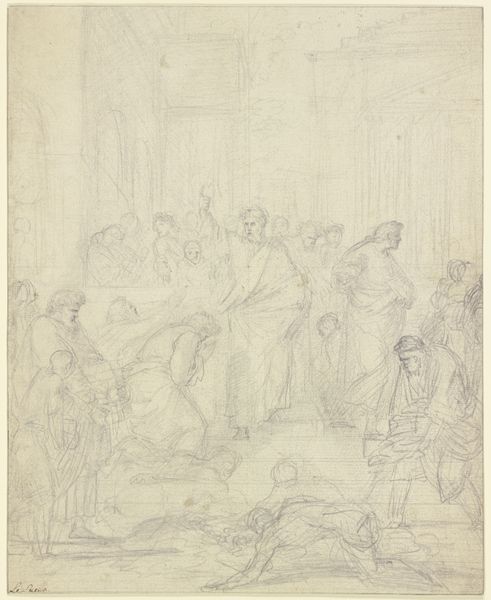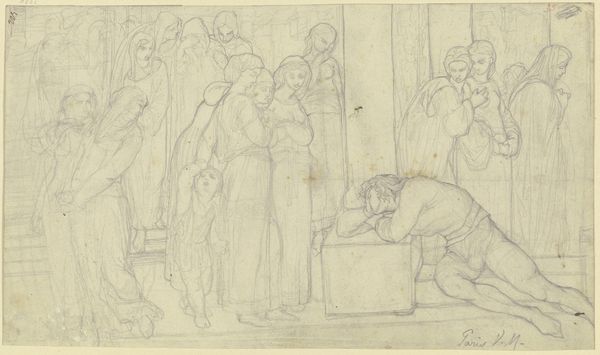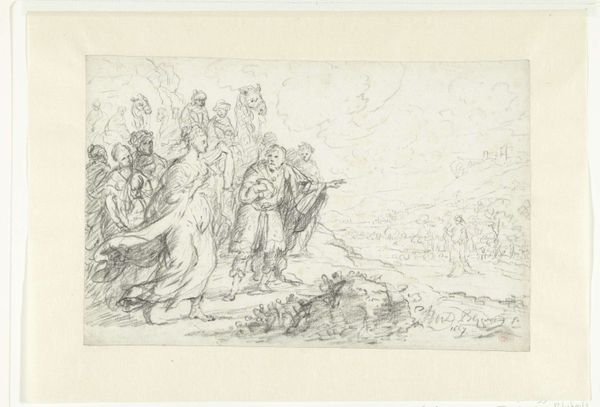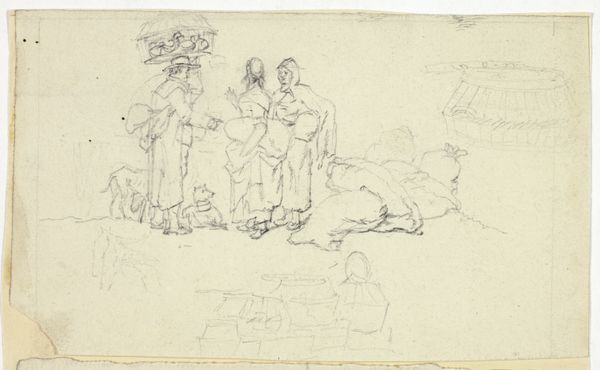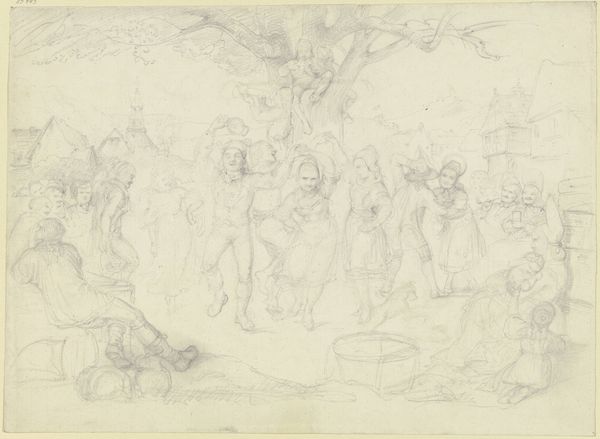
drawing, pencil
#
drawing
#
neoclacissism
#
pencil sketch
#
landscape
#
figuration
#
pencil
#
15_18th-century
#
sketchbook drawing
#
pencil work
#
history-painting
#
academic-art
Copyright: Public Domain
Curator: This pencil drawing, "Homer Singing the Iliad to the Greeks," by Eugen Eduard Schäffer, dates back to 1796 and aligns with the Neoclassical art movement. It's currently held at the Städel Museum. Editor: My first thought is how ghostly it feels; unfinished, a fleeting vision of the past rendered in faint lines. It suggests a delicate moment frozen in time, but who are we really seeing and how are they represented? Curator: Schäffer's choice of the Neoclassical style places particular emphasis on clarity, order, and drawing from classical sources. He seeks to depict not just Homer himself but an ideal of ancient Greek culture and learning. Academic art prized draftsmanship, and preliminary sketches like this, using just pencil, held an important place in the overall creative process. Editor: Absolutely, but the almost unfinished quality reveals so much about the social construction of the Classics at that time. Notice how this "historical" image normalizes whiteness in its figures; that detail is certainly worth highlighting as part of this image's narrative. It almost feels like he is projecting 18th-century ideals onto ancient Greece. What kind of political and social functions did art serve? Curator: Precisely! These Neoclassical works often served to legitimize contemporary political and social structures. The invocation of a seemingly pure, ordered past could act as an endorsement for existing power dynamics. The figure of Homer is, itself, a construction. In effect, art functioned, at least in part, as propaganda, advancing a specific, self-serving vision of cultural history. Editor: Right. So the history depicted isn't necessarily factual, but rather reflects the power dynamics and agendas of Schäffer's time. And as we look at it now, our critical intervention must center questions of power and whose interests are being served. This image doesn't just reflect the past, it actively shapes how we think about it and our relationship to it. Curator: Precisely, examining an image like this allows us to understand the intricate role of art in constructing not just the past, but our present understanding of it. Editor: Thinking about art in this way ensures it remains relevant in discussions about identity and representation. Thank you!
Comments
No comments
Be the first to comment and join the conversation on the ultimate creative platform.
